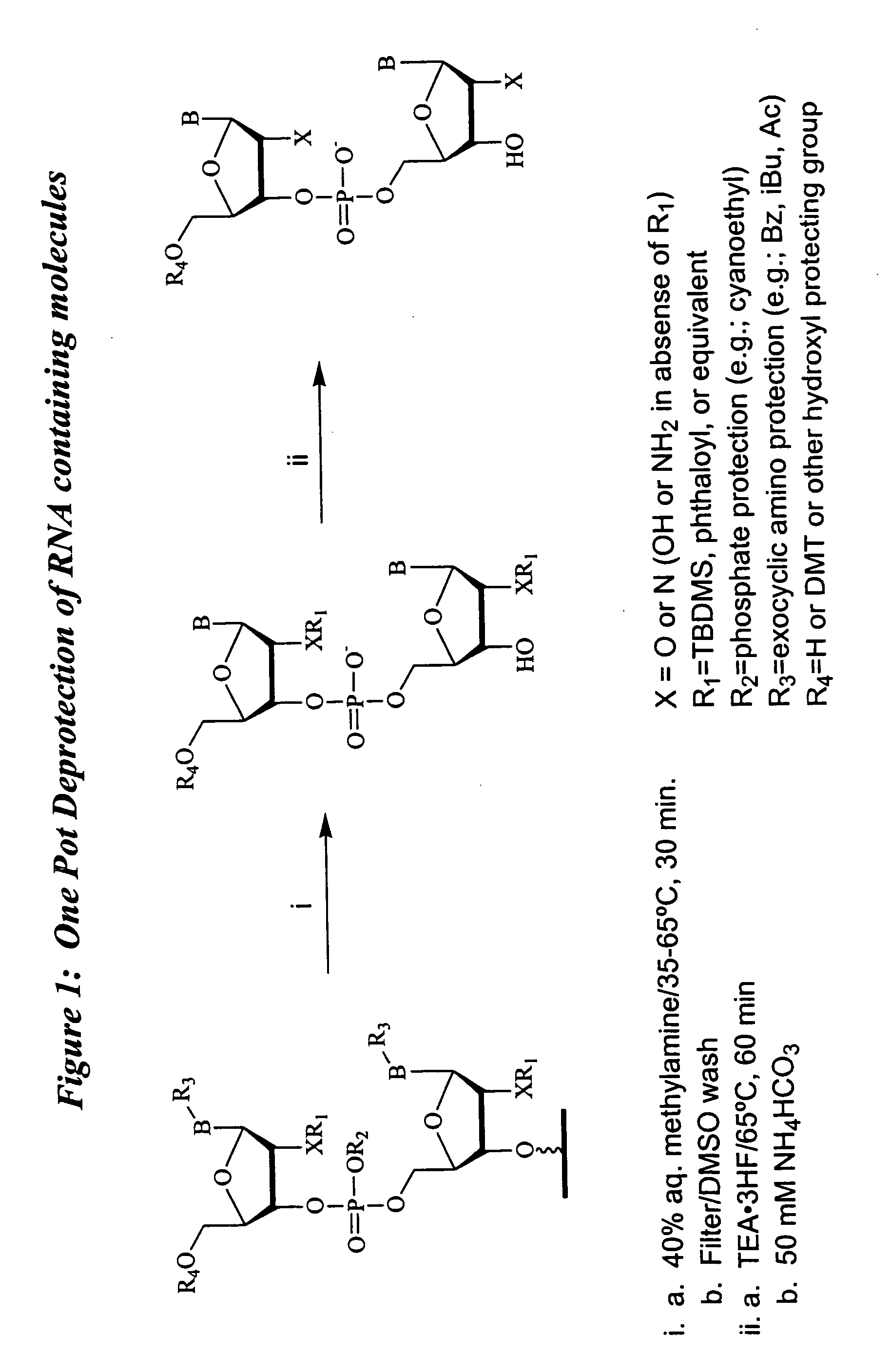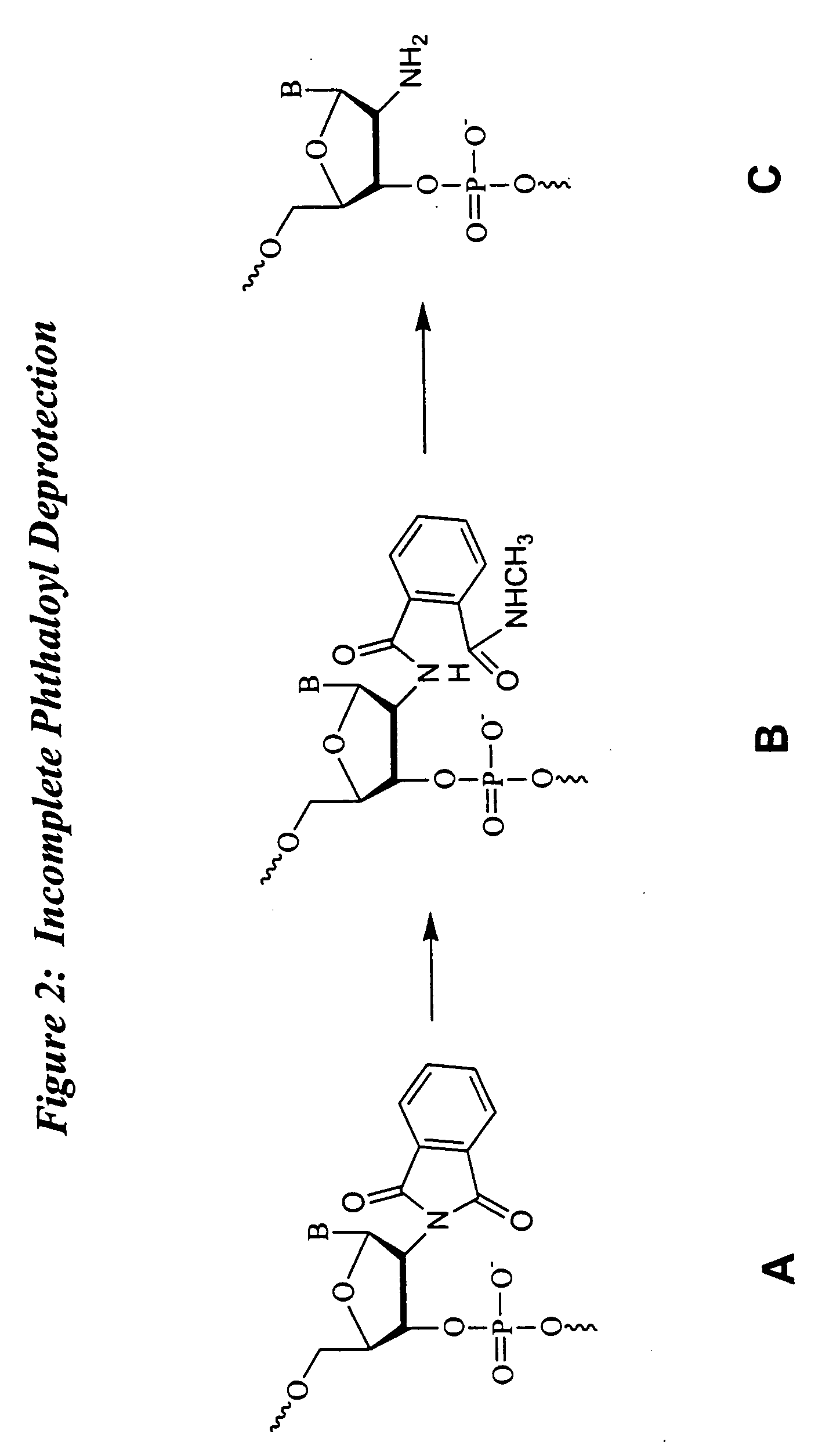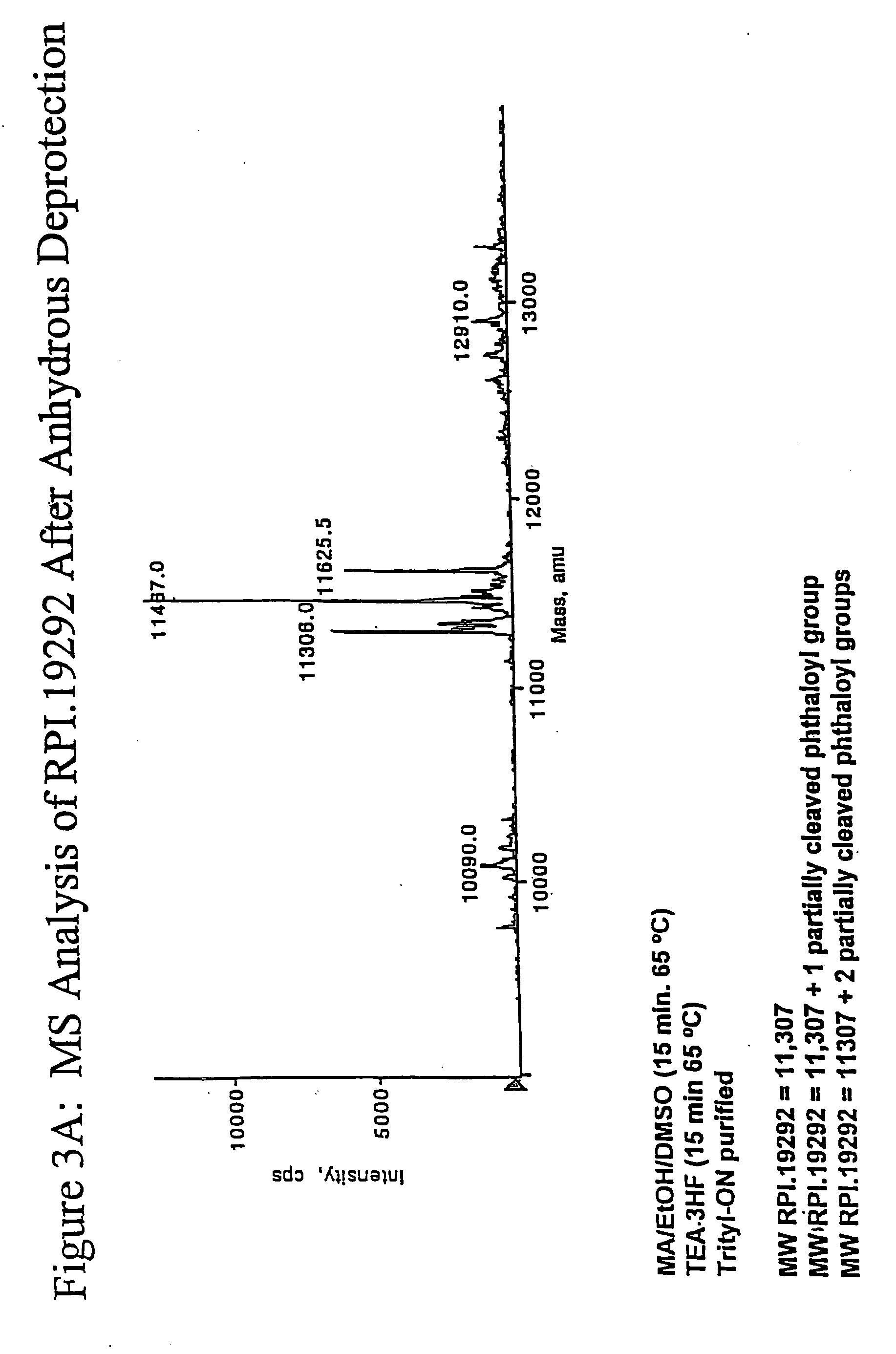Deprotection and purification of oligonucleotides and their derivatives
- Summary
- Abstract
- Description
- Claims
- Application Information
AI Technical Summary
Benefits of technology
Problems solved by technology
Method used
Image
Examples
example 1
Small Scale Deprotection of an Oligonucleotide Comprising One or More Ribonucleotides with 2′-O-TBDMS / N-phthaloyl Protection Using a One-pot Anhydrous Deprotection Method
[0146] A ribozyrne sequence (Table II) (200 μmole) containing two N-phthaloyl protected 2′-amino nucleosides was synthesized as described herein, on CPG support with a Pharmacia OPII synthesizer. After the synthesis, the support was dried for 15 to 30 min. Approximately 20 mg of the support was transferred to a 5 ml screw capped vial. A 1:1 mixture of 33% methylamine / ethanol (800 μl) and dry DMSO (800 μl) was added to the support and the mixture was heated at 65° C. using a heating block for 15 min. The solution was cooled to rt and then filtered through a 0.5 micron filter into another 5 ml screw capped vial. TEA.3HF (600 μl) was added to the reaction mixture followed by heating at 65° C. for 15 min. The mixture was then cooled and quenched with 50 mM NaOAc (2 ml). The corresponding deprotected, purified full leng...
example 2
Small Scale Deprotection of an Oligonucleotide Comprising One or More Ribonucleotides with 2′-O-TBDMS / N-phthaloyl Protection Using a One-pot Aqueous Deprotection Method
[0147] A ribozyme sequence (Table II) (200 μmole) was synthesized as described herein on CPG support with a Pharmacia OPII synthesizer. After the synthesis, the support was dried for 15 to 30 min. Approximately 20 mg of the support was transferred to a 5 ml screw capped vial and the support was heated with aqueous methylamine (1 ml) at 65° C. using a heating block for 15 min. The solution was cooled to rt and then filtered through a 0.5 micron filter into another 5 ml screw capped vial. DMSO (1.6 ml) and TEA.3HF (600 μl) were added to the reaction mixture followed by heating at 65° C. for 15 min. The mixture was then cooled and quenched with 50 mM NaOAc (2 ml). The corresponding deprotected, purified full-length oligonucleotide was analyzed by Capillary Gel Electrophoresis and ES Mass Spec. The mass spectrum revealed...
example 3
Small Scale Deprotection of an Oligonucleotide Comprising One or More Ribonucleotides with 2′-O-TBDMS / N-phthaloyl Protection Using a One-pot Aqueous Deprotection Method Without DMSO
[0148] A ribozyme sequence (Table II) (200 μmole) was synthesized as described herein on CPG support with a Pharmacia OPII synthesizer. After the synthesis, the support was dried for 15 to 30 min. Approximately 20 mg of the support was transferred to a 5 ml screw capped vial and the support was heated with aqueous methylamine (1 ml) at 65° C. using a heating block for 15 min. The solution was cooled to rt and then filtered through a 0.5 micron filter into another 5 ml screw capped vial. TEA.3HF (600 μl) was added to the reaction mixture followed by heating at 65° C. for 15 min. The mixture was then cooled and quenched with 50 mM NaOAc (2 ml). The corresponding deprotected, purified full-length oligonucleotide was analyzed by ion exchange HPLC. The HPLC trace revealed significant degradation corresponding...
PUM
| Property | Measurement | Unit |
|---|---|---|
| Fraction | aaaaa | aaaaa |
| Fraction | aaaaa | aaaaa |
| Molar density | aaaaa | aaaaa |
Abstract
Description
Claims
Application Information
 Login to view more
Login to view more - R&D Engineer
- R&D Manager
- IP Professional
- Industry Leading Data Capabilities
- Powerful AI technology
- Patent DNA Extraction
Browse by: Latest US Patents, China's latest patents, Technical Efficacy Thesaurus, Application Domain, Technology Topic.
© 2024 PatSnap. All rights reserved.Legal|Privacy policy|Modern Slavery Act Transparency Statement|Sitemap



